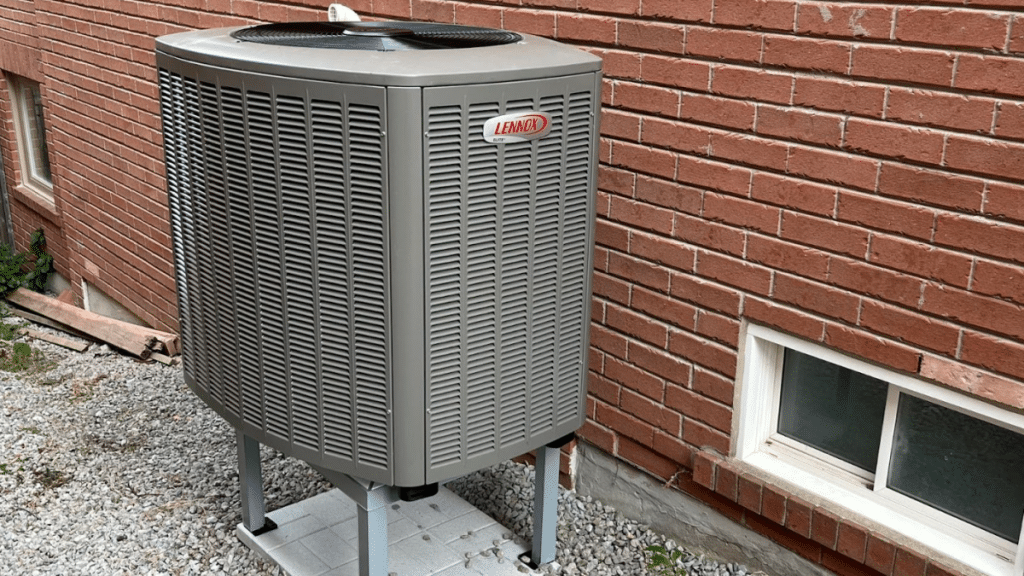Heat pumps use electricity to transfer heat from outside to inside. An air-source heat pump extracts warmth from the air, even in cold weather, using an outdoor unit and an indoor coil to distribute the heated air throughout your home. This method provides efficient heating by moving existing heat rather than generating new heat.
Furnaces, on the other hand, generate heat by burning fuels such as natural gas or oil, or by using electric heating elements. The heated air is then distributed through a duct system, making furnaces a reliable heating solution for colder climates where consistent warmth is essential.
1. Key Differences Between Heat Pumps and Furnaces
When comparing heat pumps and furnaces, energy efficiency stands out. Heat pumps are generally more energy efficient as they transfer heat instead of generating it. High-efficiency heat pumps can significantly lower energy consumption, leading to potential savings on energy bills. On the other hand, gas furnaces, while effective in extreme cold, use more fuel and result in higher energy usage.
The heating method also varies. Heat pumps rely on heat transfer, using a heat exchanger, while furnaces create heat directly. This often allows furnaces to heat a home faster but can lead to increased energy costs.
Climate suitability is another factor to consider. Heat pumps excel in moderate or milder climates but can still work in colder climates if you choose a cold-climate heat pump model. Furnaces are ideal for areas with long, harsh winters and temperatures well below freezing.
2. Initial Costs and Installation
Initial costs can differ significantly between the two systems. Heat pumps typically come with higher upfront costs compared to furnaces. An electric heat pump installation may also require an electrical upgrade, especially if your home has an older electrical panel.
The installation process for heat pumps may involve both outdoor and indoor units for ductless heat pump systems or integration with existing ductwork for a central heat pump system. Furnace installation tends to be more straightforward but may require gas lines or venting, which can add to the overall cost.
3. Operational Costs and Long-Term Savings
Operational costs are an essential factor when choosing between a heat pump and a furnace. Heat pumps often result in lower monthly energy bills, particularly when used as the primary space heating system in regions with milder winters. In contrast, gas heating systems can lead to higher utility bills due to fluctuating gas prices and increased energy consumption.
Maintenance also plays a role in long-term costs. Regular maintenance is essential for both systems. Heat pumps typically need annual maintenance, whereas furnaces, especially oil-burning ones, may require more frequent inspections. Heat pumps usually last between 15-20 years, while gas furnaces may need replacement around the 15-year mark.
4. Environmental Impact
When it comes to environmental impact, heat pumps have an edge. They produce fewer greenhouse gas emissions, particularly when paired with renewable energy sources. This can significantly reduce your carbon footprint. In contrast, gas and oil furnaces emit carbon dioxide and other greenhouse gases, contributing to a larger environmental impact.
High-efficiency heat pumps can also be paired with renewable energy sources like solar panels, further reducing reliance on fossil fuels. This compatibility makes heat pumps a cleaner, more sustainable heating option.
5. Pros and Cons of Heat Pumps
Heat pumps offer several advantages, including energy efficiency, dual heating and air conditioning capabilities, and a smaller carbon footprint. However, they come with higher initial costs and may need supplemental heating during extremely cold temperatures to maintain a comfortable temperature indoors.
6. Pros and Cons of Furnaces
Furnaces provide reliable heating in cold climates and tend to have lower initial costs compared to some heat pump systems. Their proven performance during cold weather makes them a preferred choice for areas with harsh winters. However, they come with higher monthly energy costs, increased carbon emissions, and potential safety hazards such as carbon monoxide leaks.
7. Which Option is Best for You?
Deciding between a heat pump and a furnace depends on several factors. If you live in an area with mild winters or a moderate climate, a heat pump may be the more energy-efficient choice. However, for colder months or regions with extremely cold climates, a natural gas furnace or a hybrid heating system could be the better option.
Budget analysis is crucial. While gas furnaces might have lower initial costs, heat pumps can offer long-term savings on energy bills. Consider the upfront costs, installation expenses, and long-term operating costs when making your decision.
Comfort preferences also matter. If you appreciate the consistent temperature control of a heat pump, it might be the right fit. However, if you prefer quick and powerful heating, a traditional furnace could suit your needs better.
Conclusion
Heat pumps and furnaces both come with their strengths and trade-offs. Heat pumps offer energy efficiency and reduced environmental impact, making them a great choice for energy-conscious homeowners. Furnaces, however, provide reliable heating during cold weather and may be a more straightforward solution for those in colder climates. Choosing the best option depends on your climate, budget, and energy goals. For some, a dual-fuel system combining an electric heat pump and a gas furnace may offer the ideal balance.
